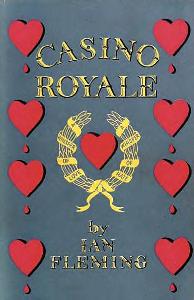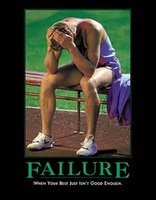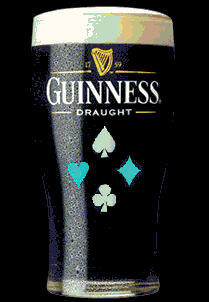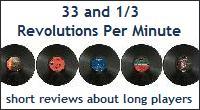Number Crunching (1 of 4)
Is this typical? A post over on Simon’s Poker Blog a couple of months ago got me interested in this “standard deviation” business and so I’ve been diggin’ around, trying to figure out what to make of it. As Simon tells us, if you use Poker Tracker you can click on the “More Detail” button under “Session Notes” (in the ring game stats) and you’ll see your “standard deviation” neatly calculated for you. Should this number be meaningful?
Since the beginning of the year, I have played around 80,000 hands of 6-max, $0.50/$1.00 limit hold ’em. Only about half of ’em are here in my database, unfortunately, as I suffered a computer meltdown in the early summer and lost a few months’ worth of stats. Those of you who use Poker Tracker, avoid Shamus’s misfortune and backup your databases on a disc or external drive! It’s only a matter of copying a few .mdb files -- click here to read Pat’s instructions about backing up your data.
For the 36,000 or so hands (of the 6-max limit game) that I currently have in my database, I see that I currently enjoy a win rate of just over 2.5 BB/100 hands. (Here, BB = “big bets,” not big blinds, so we’re talking about $2.50/100 hands.) Now I know that rate has fluctuated between 2 and 3 during the entire run, but for the most part the rate has hung around the 2.5 mark pretty much throughout. I also know that before the crash, I had just about the same rate for the 50,000-odd hands I had in there before. (Reading around I see that 2 BB/100 hands is generally considered a decent rate for micro/low limit games, so I’m doing okay there, I suppose.)
Poker Tracker tells me my current “standard deviation” when playing this particular game at this particular limit is just a hair under 18 BB/100 hands. (That’s about where I was before the crash, also.) If understand it correctly, my “standard deviation” indicates the likelihood that I will in fact win my “average” 2.5 BB in the next 100 hands I play. (Please, if anyone knows better about any of this stuff, correct me mercilessly.)
Of course, I usually don’t earn exactly $2.50 for every 100 hands. Sometimes I earn $5.15 (like today). Sometimes I lose $12. Sometimes I win $20. Having a standard deviation of 18 BB/100 means that I will usually (but not always) land in a range anywhere from 20.5 BB up to 16.5 BB down. In other words, the number indicates the degree of “variance” I should expect when playing this particular game. In fact -- as my old statistics textbook explains -- “variance” is precisely the square of “standard deviation,” so these two terms are directly related to one another.
Now if I had literally made or lost no more than 2 or 3 BB for every 100 hands I played, my statistical deviation would have been much lower. But I didn’t. Obviously my wins and losses during those individual 100-hand segments were much greater, and thus my standard deviation is 18 BB/100. From reading around, I see that my number here isn’t necessarily that unusual. (Keep in mind I am playing 6-max games, where one tends to experience more variance than at full tables.) I could be wrong, but I’d venture to guess that my win rate (2.5 BB/100 hands) and my standard deviation (18 BB/100 hands) are both fairly typical for moderately successful players who spend most of their time at this limit.
The more hands a person has played, the more representative stats like win rates and standard deviations become. There is a lot of disagreement about how many hands constitutes a meaningful sample, but for the sake of argument I’m going to assume that my 80,000-hand sample is enough to ensure that these numbers mean something.
I thought I’d use the next three posts to “think out loud” and explain (to myself and to anyone else who is interested and who might help me) what these numbers -- my win rate, my standard deviation, the number of hands I’ve played -- might help me as I try to assess myself as a player. Here are the questions I thought I’d try to answer over the next three posts:
(1) How might I use these stats to predict how my next 100 hands (of 6-max, $0.50/$1.00 limit hold ’em) will go?
(2) How might I use these stats to determine what kind of bankroll is suitable for me to be playing this particular game at this particular limit?
(3) How might I use these stats to help decide whether or not it might be time for me to make the move (seriously, not just occasionally as I am doing now) to a higher limit game?
Before I do, though, I think I’ll head back to the tables for another hundred or two. Not sure yet what these stats are going to tell me, but I am pretty sure they ain’t gonna tell me math is more fun than poker.
Photo: “Chinese Abacus,” Dave Fischer. CC BY-SA 3.0.
Labels: *shots in the dark


 in the small blind. One player limped, then there was a raise in late position. I called, as did the big blind and limper. So four of us saw the flop come
in the small blind. One player limped, then there was a raise in late position. I called, as did the big blind and limper. So four of us saw the flop come 

 .
.  , and I bet out again, representing trips. This time two of the remaining three players called. By now I was hoping the flush would not come. When the river brought the
, and I bet out again, representing trips. This time two of the remaining three players called. By now I was hoping the flush would not come. When the river brought the  , I took a chance and bet again. The first player quickly folded, and the preflop raiser lingered a moment (wondering if his ace would play, no doubt) before folding as well.
, I took a chance and bet again. The first player quickly folded, and the preflop raiser lingered a moment (wondering if his ace would play, no doubt) before folding as well.


 in the BB. Two players limp, the SB completes, and I check. The flop comes
in the BB. Two players limp, the SB completes, and I check. The flop comes 

 and all four of us check. The turn is the
and all four of us check. The turn is the  . Stubbornly I bet out, heedless of the likely possibility there’s a boat sailing around the table somewhere. One player raises and the other calls, so I have to call it down. Indeed, I’m beaten by the player who had chosen to limp in with
. Stubbornly I bet out, heedless of the likely possibility there’s a boat sailing around the table somewhere. One player raises and the other calls, so I have to call it down. Indeed, I’m beaten by the player who had chosen to limp in with  . (The other caller had the case ten for a crummy pair.)
. (The other caller had the case ten for a crummy pair.) 


 .
. , giving me trips. I checked, NoBidder bet, the button called, and I check-raised. “I love getting turned,” typed an unhappy NoBidder in the chat box as he folded. (Probably had an ace -- or maybe a draw -- I thought; smart fold.) The button called. The river was the
, giving me trips. I checked, NoBidder bet, the button called, and I check-raised. “I love getting turned,” typed an unhappy NoBidder in the chat box as he folded. (Probably had an ace -- or maybe a draw -- I thought; smart fold.) The button called. The river was the 
 . The total pot was $10.95, with my profit being $6.95.
. The total pot was $10.95, with my profit being $6.95.


 , but the turn and river brought no club or queen and I was out in a hurry. So in three attempts I have a second, a first, and a 31st.
, but the turn and river brought no club or queen and I was out in a hurry. So in three attempts I have a second, a first, and a 31st.


 .
.


 . The flop brought two diamonds, but no more (and no deuce) so my hand held up.
. The flop brought two diamonds, but no more (and no deuce) so my hand held up. 
 and just called from the SB. He called behind me and the flop came
and just called from the SB. He called behind me and the flop came 
 . I didn’t care for the flop very much --
. I didn’t care for the flop very much -- 

 -- but the turn and river brought no heart, eight, or ace, and so my fives held up. Suddenly I was ahead with 30,442 (to his 23,558).
-- but the turn and river brought no heart, eight, or ace, and so my fives held up. Suddenly I was ahead with 30,442 (to his 23,558). 

 and I checked. He bet 6,000, I raised it to 16,000, he pushed and I called. He had
and I checked. He bet 6,000, I raised it to 16,000, he pushed and I called. He had 













